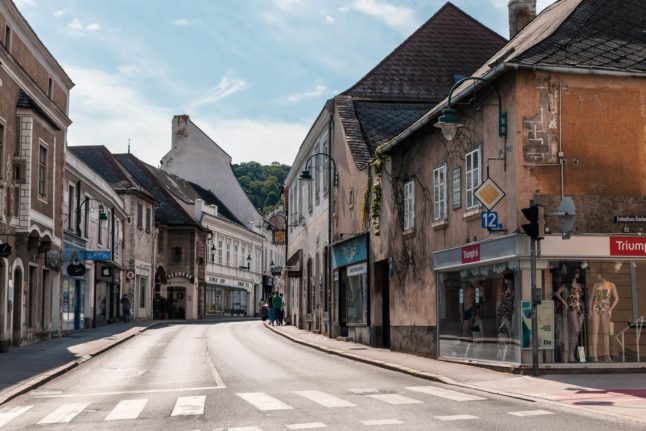What’s happening?
Andreas Babler, leader of the Social Democratic Party of Austria (SPÖ), is calling for the standard working week to be reduced to 32 hours with full wage compensation.
This demand is supported by the Austrian Trade Union Confederation (ÖGB) and will be negotiated in the coming months between unions and industry representatives.
However, Chamber of Commerce (WKO) President Harald Mahrer claims that a reduction in working hours could result in the number of job vacancies increasing by 230,000 as people wouldn’t be available to work as many hours. There are currently 220,000 vacancies in Austria, reports ORF.
READ ALSO: How the ÖVP wants to make it harder for foreigners in Austria to access benefits
Meanwhile, a study by the Austrian institute of Economic Research (WIFO), on behalf of the Chamber of Labor (AK), found that a reduction in working hours by 3.5 percent would actually increase hourly wages by 3.3 percent, productivity by 1.5 percent and employment by 1.4 percent.
As both sides state their case ahead of the negotiations we take a closer look at the arguments for and against reducing the working week.
Why are unions and the Social Democrats pushing for this?
ÖGB President Wolfgang Katzian recently told the Ö1 morning journal that the current shortage of workers in many sectors in Austria was due to working conditions or wages.
Katzian cited the care sector as an example where reduced hours could make the profession more attractive, and help attract people to the job.
READ ALSO: Unemployment benefits in Austria: Who is eligible and how much can you get?
He also rejected criticism that the plans would immediately change how people work.

Katzian said: “All the reductions in working hours in history were not made from one day to the next, but with correspondingly long transition periods.”
Similarly, Josef Muchitsch, Chairman of the Social Democratic Trade Union (FSG), said: “Of course, that doesn’t happen overnight, it takes a few years and is specific to the industry – WKO President Mahrer knows that very well, which is why his figures on the shortage of workers if you reduce working hours immediately are of course purely negative propaganda.”
And SPÖ leader Babler simply said: “Across the board, I believe that within eight or nine years we will certainly have taken a big step towards reducing working hours again.”
The Austrian Catholic Workers’ Movement (KABÖ) also supports a 4-day working week and said it can facilitate a “a healthier life overall”.
However, Holger Bonin, head of the Institute for Advanced Studies (IHS) said a reduction in working hours can only be considered depending on the industry.
A WKO analysis states that if working hours are reduced, it will result in 18,000 extra vacancies in the public administration sector, 16,000 in the health and care sector, 14,500 in education, and 11,000 in gastronomy and the hotel industry. By 2040, the report forecasts the move could lead to more than 800,000 vacancies across the country.
Instead, WKO President Mahrer is calling for a “massive expansion” of childcare across Austria and easier access to the labour market for immigrants, while stating that most people are willing to work more.
READ ALSO: EXPLAINED: How do employer top-ups to my pension work in Austria?
‘Change is happening quickly’
As to be expected, the topic of a 4-day week is proving to be controversial in Austria and some experts are predicting trials will be introduced before industries commit to a wider roll-out across the workforce.
An example of this is Vienna’s publicly-owned Wiener Linien, which operates public transport services in the Austrian capital.
Last year it introduced certain benefits to workers and has an ongoing pilot programme with some employees working four days a week. Employees still work 37.5 hours a week but spread those out over four days.
The trial was introduced as the company struggled to fill 900 vacancies and was forced to make employment at the company more attractive.
Meanwhile, a comment piece in Der Standard calls for more investment in training before any changes to working hours are implemented.
Writer Karin Bauer said: “We are facing issues in the labour market that go far beyond the populist discourse on working hours. Change is happening quickly now and there is more to it than sabre-rattling before the upcoming collective [negotiation] rounds.”
As the situation currently stands, the negotiations could go either way. But they will no doubt be closely watched by those on both sides of the argument.
READ ALSO: More Austrian companies moving ahead with a four-day week in 2023








 Please whitelist us to continue reading.
Please whitelist us to continue reading.
Member comments